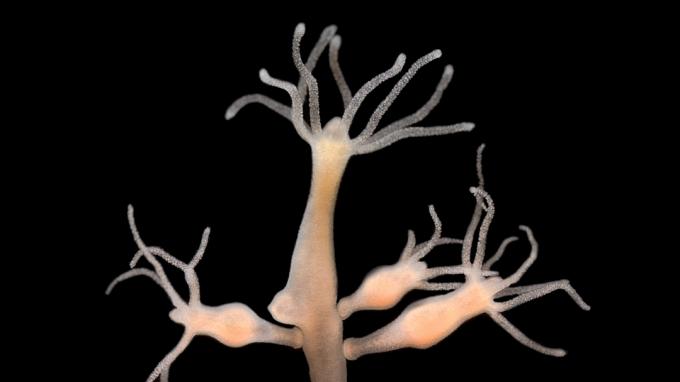Nise da Silveira she was an important Brazilian psychiatrist, considered a pioneer in the defense of humanized treatments for patients with mental disorders. She has always taken a stand against violent methods, such as electroshock, and introduced treatments that put patients in contact with domestic animals and artistic expressions.
She graduated in Medicine in Bahia and specialized in psychiatry in Rio de Janeiro. She was arrested in the 1930s for her involvement with leftist organizations such as the Brazilian Communist Party. The inclusion of Nise da Silveira in the Book of Heroes and Heroines of the Fatherland was proposed, which was vetoed by Jair Bolsonaro.
She also read: Oswaldo Cruz — doctor who was marked in the history of Brazil for fighting epidemics
Summary about Nise da Silveira
Nise da Silveira was a psychiatrist who bequeathed a great contribution to the treatment of mental disorders.
She criticized violent treatments like electroshock and insulin therapy.
She introduced, in our country, treatments that put patients in contact with artistic expressions and domestic animals.
She was arrested in the 1930s for involvement with leftist organizations such as the PCB.
She had her inscription in the Book of Heroes and Heroines of the Fatherland vetoed by Jair Bolsonaro.
Birth and youth of Nise da Silveira
Nise Magalhães da Silveira was born in Maceió, capital of Alagoas, on February 15, 1905. She was the daughter of Faustino Magalhães, who worked as a Mathematics teacher and journalist, and Maria Lidia da Silveira, a pianist. During her childhood, she studied at one of the best schools in her city, Colégio Santíssimo Sacramento, an institution run by nuns.
Is it over there entered higher education at the age of 16 and she was enrolled at the Faculty of Medicine of Bahia between 1921 and 1926. Young Nise was the only woman to graduate in Medicine in a class of 157 people. Family support was essential for her to achieve this feat.
Adult life and imprisonment of Nise da Silveira
Nise da Silveira graduated in 1926. The following year, she decided to move to Rio de Janeiro, together with her husband, public health specialist Mário Magalhães da Silveira, of whom she was a cousin. There, they sought to take the first steps in their careers in Medicine, in addition to seeking financial stability.
The young Nise da Silveira Interned for a period in a neurology clinic of a doctor named Antônio Austregésilo. This clinic was linked to the Faculdade de Medicina do Distrito Federal, and this opportunity allowed Nise to specialize in psychiatry. In 1933, she decided to participate in a competition that offered vacancies to work in the Service for Assistance to Psychopaths and Mental Prophylaxis of the Hospício Nacional de Alienados, in Rio de Janeiro.
She passed the contest and assumed that public office. However, his public career was interrupted by the repressive political climate that gained space in Brazil during the 1930s. That's because Nise da Silveira was a intellectual who complied with the ideals of the communism and engaged in activities of the Brazilian Communist Party, the PCB.
Her involvement was limited because party members did not agree with Nise's dedication to the contest she was approved for. She was also critical of some party guidelines, and this was enough for her to be expelled from the PCB on the charge of being a Trotskyist (that is, of following the proposal of the Leon Trotsky for socialism), but the accusation was false, as Nise da Silveira never identified herself as such.
The doctor's involvement with communism made her signsse the Manifesto of Intellectual Workers to the Brazilian People, a document that defended the struggle of workers against oppression and misery and praised the Soviet Union as the country capable of fighting the ills of capitalist societies.
This document was signed by Nise da Silveira and other intellectuals, such as journalists and lawyers. THE signature of this document what Nise turned into a suspicious figure for the police. After carrying out the Communist Intent, the signatories of this documentary began to be investigated.
Considered suspicious for her posture and activities and linked to communism, Nise ended up stuck in February 1936her, after being denounced by a co-worker for possessing Marxist-oriented books. When she was arrested, the police found several pamphlets and books of Marxist ideology in Nise's belongings.
Nise remained imprisoned until August 1937, when she escaped from prison and retired to the interior of Bahia. In January 1938, Nise da Silveira's case was brought to trial, but she did not attend the session as she remained hidden from the authorities. In any case, she was acquitted because there was no case brought against her.
Nise da Silveira's career in psychiatry
THE Nise Silveira's medical career was only resumed in 1944, when the dictatorship of new state weakened in Brazil and in which amnesty was granted to those who were politically persecuted. Nise started working at the National Psychiatric Center of Engenho de Dentro, currently known as Instituto Municipal Nise da Silveira, located in Rio de Janeiro.
Nise da Silveira's performance in psychiatry was marked by her fierce opposition The traditional practices of that field in that period. The treatments for psychiatric problems used at the time were invasive and violent, bringing great suffering to patients - in addition to the suffering caused by the disorders themselves.
So Nise put herself against the use of treatments based in lobotomy, insulin therapy and electroshock. The first consisted of brain surgery, the second was an insulin-based treatment aimed at putting the patient into a coma. to disconnect the brain from psychic problems and the third was the use of shock sessions as a treatment for schizophrenia.
Nise da Silveira's professional performance was aimed at combating these (and other) traditional and violent methods. She proposed alternative, more humane treatments to ensure the patients' recovery. One of the alternative methods proposed by Nise was the use of art.
He encouraged his patients The engagesrem in painting and modeling as a way to treat your mental health. The results of this work are on display at the Museum of Images of the Unconscious, founded by her in 1952 with the purpose of bringing the works produced by the inmates to the public.
Nise da Silveira she was also marked for using dogs and cats in the treatment patients, allowing them to have autonomy to care for the animals. She used them as a way to establish a bond of affection between the patients and the animals and obtained good results with this practice. These people were cared for by Nise at Casa das Palmeiras, founded by the doctor in 1956.
O her work was considered a pioneer in Brazil, allowing a significant advance in the treatments offered by psychiatry. She was also a pioneer in introducing studies on Carl Gustav Jung, an important psychiatrist from Switzerland, to our country. In this way, she contributed to the dissemination of the treatment methods proposed by Jung.
Read too: Jung and the construction of analytical psychology
Last years of Nise da Silveira
In 1975, Nise da Silveira retired compulsorily — Because she turned 70 years old. She continued carrying out studies in the field of psychiatry, some of which were published. In addition, she received numerous awards for the work developed throughout her life and became a reference in Brazilian psychiatry, also receiving international recognition.
Nise da Silveira was in poor health throughout the 1990s, due to her advanced age, and died on October 30, 1999, in Rio de Janeiro, as a result of heart failure.
Inclusion in the Book of Heroes and Heroines of the Fatherland
In 2017, federal deputy Jandira Feghali proposed the inclusion of Nise da Silveira's name in the Book of Heroes and Heroines of the Homeland. The deputy's proposal was a way of recognizing the pioneering role of the psychiatrist in the dissemination of more humane treatments in our country against mental disorders.
The bill proposed by Feghali passed the Senate floor in April 2022, but was vetoed by President Jair Bolsonaro in May of the same year. The presidency argued that the proposal is “contrary to the public interest”.
Image credits:
[1] from Oliveira Franca and shutterstock
By Daniel Neves Silva
History teacher
Source: Brazil School - https://brasilescola.uol.com.br/biografia/nise-da-silveira.htm



